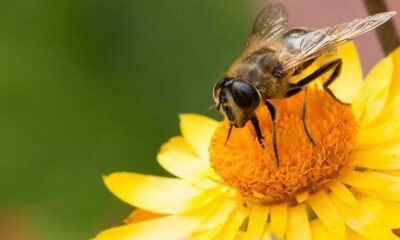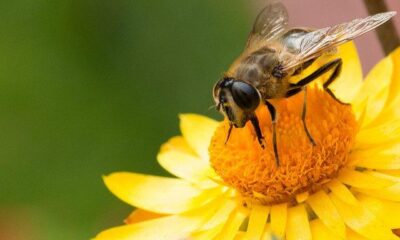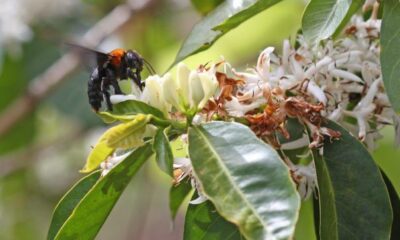

Environment
Bee deaths are getting worse, and no one knows why
It’s called Colony Collapse Disorder (CCD). A bustling beehive that seems healthy will quickly turn into a ghost town. A live queen may be left behind, or even a few young bees, but little else. The hive simply vanishes.
This article was written by Joshua O’Connor and first published on Timeline.com. Get Timeline App.
Hive deaths have occurred for centuries but became a huge problem in America a decade ago. You need bees to pollinate some food crops or they won’t grow. Beehive numbers have dwindled so much that beekeepers are forced to tour hives around in trucks, going from farm to farm. And now bees are dying not just in winter, but summer too.
What are the causes and how should we address them to safeguard our agricultural food sources? Here’s what we know so far.
1940s—1990s: The growing threat to professional bees
United States
The number of working bees had been falling for decades. In the ’40s there were about 5 million managed beehives. There are half as many today.
Beehives were threatened by disease-causing pathogens and new types of pests in the ’80s. The ’90s brought tracheal mites and the Asian Varroa destructor mite to the US and Europe.
2006: Mass hive deaths shock bee community
United States
The death of beehives, or colonies, is not unusual, especially in winter months. Records of waves of sudden hive deaths date back centuries, too. But when beekeepers started reporting loss of 30-90% of their hives, they knew something was different. From 2006 to 2011, keepers lost a third of their hives, with much of the damage attributed to CCD.
No cause has been scientifically proven, but factors include pathogens like fungi and viruses, parasites, lack of biodiversity in nectar-producing plants, and stress from overcrowding and transporting bees. The US Department of Agriculture sponsored a multi-disciplinary working group to study the problem and find out how to solve it.
2012: Robot bee makes first test flight
Cambridge, MA, US
Some scientists believe genetic tinkering can help solve the hive death problem. By inserting genes into bees that confer resistance to stress or diseases, they want to create “superbees” that won’t succumb to Colony Collapse Disorder. It’s a divisive issue, though — many researchers say we should let bees evolve naturally to face threats, even if it means losing many hives in the process.
If biology fails, there’s always robots. A robot bee designed at Harvard assembles itself like origami and flaps its wings 120 times a second. Its creators say RoboBee could take 20 years to perfect, though. Even then, drones would only be used as a stopgap to mechanically pollinate crops, rather than a permanent replacement.
April 29, 2013: EU bans nicotine-based pesticide
Brussels
Nicotine is a common pesticide sprayed onto plants. They is absorb it as they grow, making them disease resistant. But the nicotine is also harmful to bees. The European Union banned neonicotinoid pesticides, sparking protests from farmers who say alternatives are even more harmful to the environment.
Some farmers advocate biodiversity on cash-crop land. They say cultivating plants that attract insects that eat pests is preferable to using any chemical.
February 9, 2015: Stressed youths may accelerate hive deaths
London
Are bees growing up too fast? Normally, they start foraging at 2-3 weeks of age. But in hives where disease, lack of food or other stresses kill older foragers, researchers discovered young bees begin foraging earlier. These stressed bees perform their tasks poorly, completing fewer flights. They also die younger. This dramatically accelerates the collapse of the colony.
“Our results suggest that tracking when bees begin to forage may be a good indicator of the overall health of a hive.” Dr. Clint Perry, University of Queen Mary London.
May 14, 2015: FDA report shows summer deaths increased
United States
Normally hive deaths occur primarily in winter. But in the 12 months ending in April, colonies started to die more frequently in the summer months, too. In fact, loss rates in summer, when bees are supposed to be at their healthiest, were actually higher than the winter rates.
Overall losses were 42%. It’s a worrying sign for the bee industry, farmers and anyone concerned about preserving biodiversity.
Photo: James Patrick Casey via flickr
Further reading:
Great British Bee Count: allotments better than parks for bees
Pollen collected by European bees contaminated with pesticides
Bees and pollinators ‘thrive’ in urban environment
Banned pesticide interferes with bees’ ability to gather food































